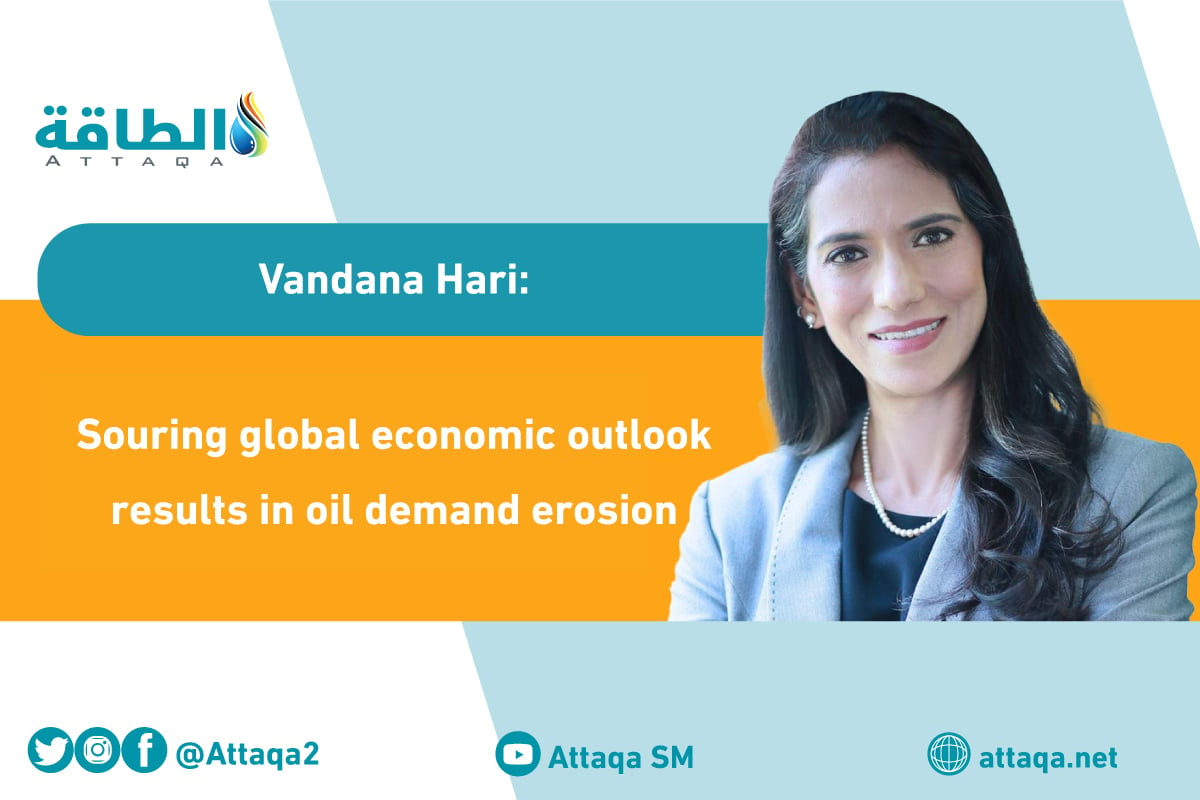
Benchmark crude futures successfully warded off the panicky sell-off in risk assets due to growing jitters over the global economy last week, but took a sudden tumble in the final hours of trading on Friday.
Brent and WTI futures settled nearly 6% and 7% lower respectively on the day, lowest levels in four to five weeks. But prices were still standing 45% higher than the start of this year.
In contrast, the latest tailspin in equities, sparked off by the US Federal Reserve accelerating monetary tightening with an interest rate hike of 75 basis points to 1.50-1.75% on June 15, pushed the S&P 500 and Dow Jones stock t indexes to lows not seen since December 2020.
A likely trigger for Friday’s sharp reversal in crude’s trajectory was a report in the Financial Times newspaper that Libyan production was closer to 700,000 b/d than the 100,000 b/d reported earlier in the week.
The FT cited an anonymous “western diplomat”, who refuted comments by Libyan oil minister Mohamed Oun carried by Bloomberg at the start of the week, on 90% of output being shut in by renewed blockades.
The sell-off was likely amplified by resurgent expectations of a recession as a stubborn, red-hot inflation forces the US Fed and major central banks around the world to aggressively withdraw the monetary stimulus that had enabled economies to begin recovering from the ravages of Covid.
A day after the Fed’s decision, the Bank of England jacked up its benchmark rate by 25 basis points to 1.25%, and the hitherto ultra-dovish Swiss National Bank raised interest rates by 50 basis points, its first hike in 15 years.
Demand erosion on the radar

Oil demand concerns have appeared on the market’s radar. Expectations of oil demand erosion follow as a corollary from a souring global economic outlook.
There are unmistakable signs that consumer sentiment is starting to buckle under persistent high inflation and growing uncertainty in the job markets.
But it is not showing up prominently in oil consumption just yet, which could be because of the momentum provided by pent-up demand for travel and leisure activity, boosted by the seasonal summer spending bump in the northern hemisphere.
OPEC expects this momentum to help boost global oil demand by 3 million b/d on average in the second half of 2022 versus H1.
The International Energy Agency and the US Energy Information Administration are less optimistic, projecting increases of 1.3-1.6 million b/d in H2 over H1.
Supply threats multiplying
Tight supply — and fears of it worsening — is the here-and-now of the oil market, whereas demand deceleration lurks at an unknown point in the future.
As long as the Ukraine war continues — and it’s hard to see a break in the deadlock at this point — the West’s sanctions threaten a reduction and disruption in Russian supply.
OPEC+ output is languishing 2.8 million b/d below its target, Kazakhstan’s giant Kashagan field is under maintenance till August, and the US Gulf Coast is bracing for an active hurricane season.
OECD commercial oil inventories crept higher in March and April, but after nearly one and a half years of being heavily drained and mostly because of the release of barrels from emergency reserves.
Meanwhile, putting aside the confusion over Libya’s current production levels, the OPEC member appears to be hurtling into another major political combat between the warring factions in the east and the west, threatening a repeat of 2020, when production was decimated to a few hundred thousand barrels per day for many months.
Last week, Russia slashed natural gas exports to Germany, France and Italy, sending benchmark regional gas and electricity prices surging.
Supplier Gazprom cited problems with the repair of turbines produced by Germany’s Siemens in the Nord Stream gas pipeline.
It could be technical issues. But it could also be Moscow’s reprisal for the EU phasing out seaborne imports of Russian crude and refined products over the next 6-7 months.
It would be naive to not expect Moscow to retaliate against efforts to shrink its oil revenues and increase its economic pain.
Moscow’s next few moves are unpredictable — it could slash gas exports to the EU further, keep them at lowered rates for a period of time, or restore them to normal levels.
But the bottomline is that President Vladimir Putin could leave the EU in dire straits by reining in gas supplies to the bloc at any time.
Novak upbeat on Russian output
Russian crude production is up 600,000 b/d from May and closing in on the 10.2 million b/d pumped in February, Deputy Prime Minister Alexander Novak said on Thursday.
Output could continue rising in July, he said, as Russian companies plan to redirect the barrels being shunned by Europe to other markets.
Novak could have been simply putting up a brave front, sending a signal to the West that Russia is overcoming the sanctions hurdles in its path. Or he could be telling the truth — it is hard to say.
Platts assessed Russian production at 9.29 million b/d in May, about 820,000 b/d lower than February and 1.3 million b/d short of its target for last month under the OPEC/non-OPEC deal.
In the longer term, Russia’s ability to survive the loss of markets in the West will depend on how successfully it is able to place most of the rejected volumes in China and India, and overcome the next major hurdle, namely European protection and indemnity clubs ending insurance cover for Russian shipments to third countries.
With so much global supply in flux and the demand trajectory still hard to read, market conditions support continued high volatility and an upside risk in prices.
*Vandana Hari is Founder and CEO of Vanda Insights, which provides macro-analysis of the global oil markets.
READ MORE..
- Shale Blessings Squandered by Bad Policy (Article)
- Energy Eggs Need Many Baskets (Article)
- Growing risks to Russian energy supply to Europe keep crude on the boil (Article)









